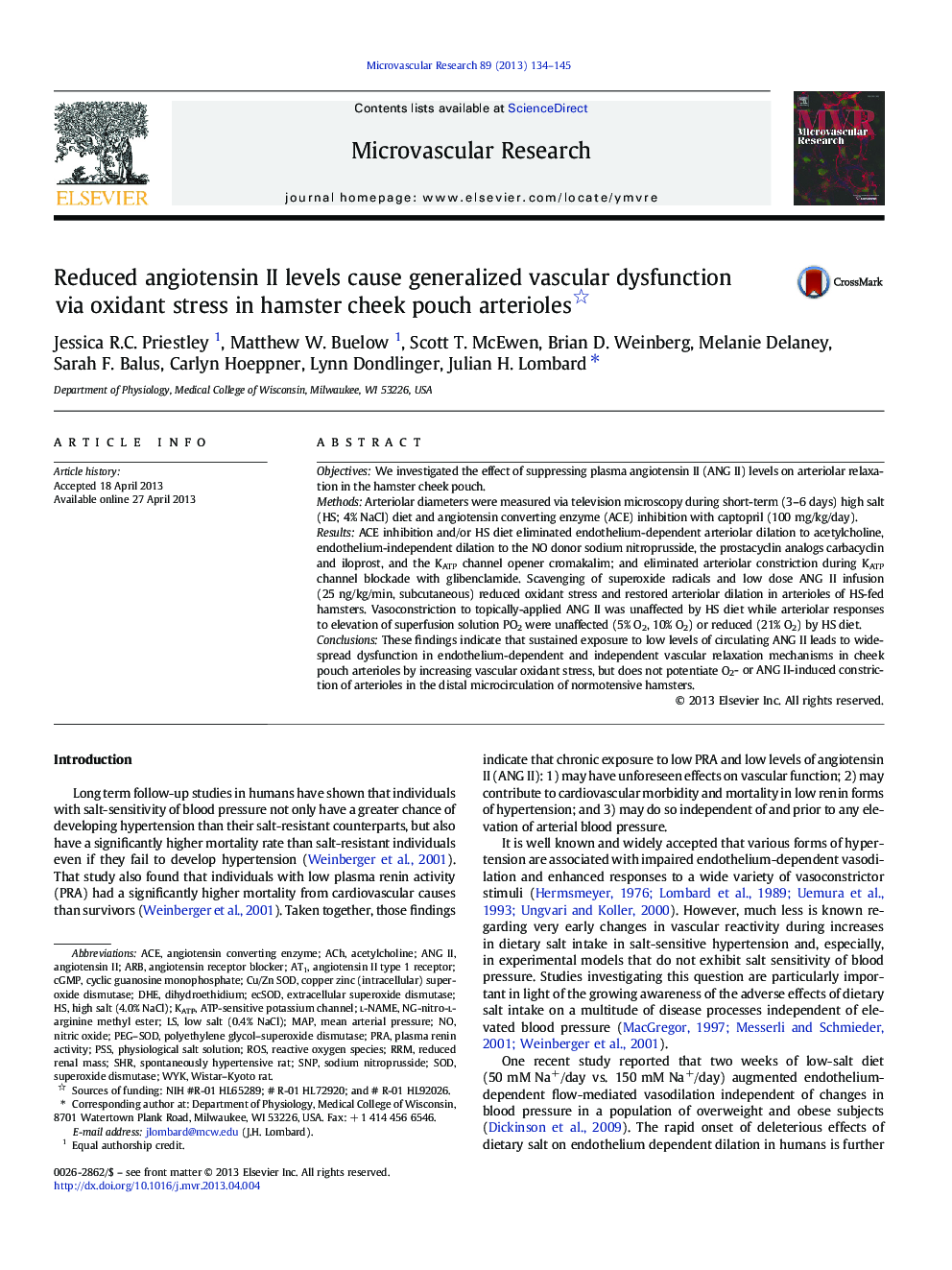| Article ID | Journal | Published Year | Pages | File Type |
|---|---|---|---|---|
| 8341348 | Microvascular Research | 2013 | 12 Pages |
Abstract
ObjectivesWe investigated the effect of suppressing plasma angiotensin II (ANG II) levels on arteriolar relaxation in the hamster cheek pouch.MethodsArteriolar diameters were measured via television microscopy during short-term (3-6Â days) high salt (HS; 4% NaCl) diet and angiotensin converting enzyme (ACE) inhibition with captopril (100Â mg/kg/day).ResultsACE inhibition and/or HS diet eliminated endothelium-dependent arteriolar dilation to acetylcholine, endothelium-independent dilation to the NO donor sodium nitroprusside, the prostacyclin analogs carbacyclin and iloprost, and the KATP channel opener cromakalim; and eliminated arteriolar constriction during KATP channel blockade with glibenclamide. Scavenging of superoxide radicals and low dose ANG II infusion (25Â ng/kg/min, subcutaneous) reduced oxidant stress and restored arteriolar dilation in arterioles of HS-fed hamsters. Vasoconstriction to topically-applied ANG II was unaffected by HS diet while arteriolar responses to elevation of superfusion solution PO2 were unaffected (5% O2, 10% O2) or reduced (21% O2) by HS diet.ConclusionsThese findings indicate that sustained exposure to low levels of circulating ANG II leads to widespread dysfunction in endothelium-dependent and independent vascular relaxation mechanisms in cheek pouch arterioles by increasing vascular oxidant stress, but does not potentiate O2- or ANG II-induced constriction of arterioles in the distal microcirculation of normotensive hamsters.
Keywords
RRMPSSNG-nitro-l-arginine methyl esterPRAKATPARBACEAT1cGMPCu/Zn SODecSODl-NAMEROSangiotensin converting enzymeangiotensin II type 1 receptorAngiotensin IIAChAcetylcholineSpontaneously Hypertensive RatAng IIdihydroethidiumWistar–Kyoto ratSODextracellular superoxide dismutaseSuperoxide dismutaseShrmean arterial pressurePlasma renin activityphysiological salt solutionAngiotensin receptor blockercyclic guanosine monophosphatemapsodium nitroprussideNitric oxideDHESNPATP-sensitive potassium channelReactive oxygen species
Related Topics
Life Sciences
Biochemistry, Genetics and Molecular Biology
Biochemistry
Authors
Jessica R.C. Priestley, Matthew W. Buelow, Scott T. McEwen, Brian D. Weinberg, Melanie Delaney, Sarah F. Balus, Carlyn Hoeppner, Lynn Dondlinger, Julian H. Lombard,
